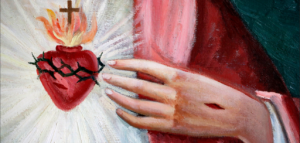
The Feast of the Epiphany
Comet Hale-Bopp hung brightly in the clear night sky – seemingly in suspended animation! I had just come out of church at the conclusion of the 8:00 p.m. Mass. I’d been waiting seemingly endlessly to finally see for myself this thrilling celestial phenomenon. The experience totally exceeded my wildest expectations! Consequently, I have at least a modicum of understanding of what the Wise Men – also known as the ‘Magi’ – must have felt when they finally discovered the Star of Bethlehem described in the Gospel of Matthew.
Author Chuck Missler informs us that the word “Magi” is the Latinized form of the Greek word magoi, transliterated from the Persian, for a select sect of priests. As a matter of fact, this is where our word “magic” is rooted. Furthermore, we learn from Father Scott Lewis, S.J., that the radiance of the starlight must have been so intense that the Magi eventually wound up in a remote corner of the Roman Empire to the tiny town of Bethlehem to find Jesus, Mary and Joseph. Fr. Lewis writes, “The first to venerate Jesus were priests of a foreign culture and religion. They were also seekers, scanning the signs of the times and the heavens not only with the senses and intellect but also the heart.”
In today’s Gospel, therefore, we learn from Matthew that the Epiphany was the event that revealed to the world the stunning phenomenon of the incarnation of God through the birth of Jesus to the Blessed Virgin Mary in order to bring salvation to all peoples: “And the Word became flesh and lived among us. (John 1:14)”
The Feast of the Epiphany, therefore, represented by the story of the Magi (traditionally thought to have come from Arabia, Persia and India), allow us to bear witness to the truth of the Incarnate Son of God – in the person of Jesus Christ – who leads us with his radiant light to our heavenly Father.
Linda Hazelden, Sales Associate

